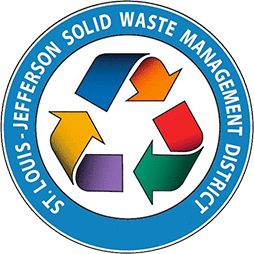
With the right support from students, faculty and staff, starting a recycling program at your school is easier than you think! Just follow these simple steps:
1. Form a Team and Gain Support
- Talk with faculty, staff and students about the recycling program and how it can make a positive impact by:
- Fostering student achievement
- Incorporating resource management skills into student body
- Help facilitate recycling habits at home
- Create a recycling team or club made up of students, staff, and faculty.
- Appoint someone as the leader of the recycling team to help coordinate recycling efforts.
2. Find Out What You Can Recycle
- By Conducting a Waste Audit you will learn exactly what materials from your waste stream can be recycled, composted or thrown away. This is a key step to understanding how to reduce the amount of trash going to the landfill.
- Common recyclables found in schools are:
- Paper and cardboard
- Beverage bottles, cans and cartons
- Electronics
3. Choose a Recycling Hauler
- Often the company who picks up the trash offers recycling pickup services as well. Contact your trash hauler to see if they have recycling services available.
- If you need help finding a recycling hauler, review our Recycling for Businesses, Institutions and Nonprofits.
- If your school is part of the St. Louis Public School District, your school should have an exterior recycling dumpster. If it does not, please contact your facilities manager to arrange for a recycling dumpster to be delivered.
 4. Organize Collection Procedures Throughout the School
4. Organize Collection Procedures Throughout the School
- Place a recycling bin in each classroom and office.
- Classroom bins can be as simple as a cardboard box or plastic tub.
- If your school is located in St. Louis city, you may be able to obtain free classroom recycling bins from us. Learn more about Saint Louis City Recycles school outreach programs.
- Be sure to place larger recycling bins in other communal areas like printer/copy machine areas, break rooms and cafeterias.
- Label recycling bins with the words, “Recycle,” or “Recycling Only.”
- On the bin or a nearby wall, post an accepted materials list like our “School Recycling 101 Poster.”
- Spend a little time explaining to students what the recycling bins are for and what they can discard in them.
- The easier it is to identify the recycling bin and what can go in it, the higher participation will be.
- Identify who will be responsible for collecting the recyclables and transporting them to the exterior collection container.
- Provide custodians with collection procedure instructions or develop a plan with students and faculty to share recycling duties.
- Remember, try to make recycling collection as easy as possible, different areas of the school may need different procedures.
5. Educate and Share Success
 If your school is located in St. Louis city, we can help you educate your students about recycling. Saint Louis City Recycles offers classroom presentations and activities for all ages. Learn more about our school outreach programs.
If your school is located in St. Louis city, we can help you educate your students about recycling. Saint Louis City Recycles offers classroom presentations and activities for all ages. Learn more about our school outreach programs.- Communicate with the school and parents success of the program.
- Share recycling tips, instructions and success via email, announcements, meetings, posters, bulletin boards, etc.
- Consider completing another Waste Audit to determine changes in your waste stream.
6. Go the Extra Step
- Purchase supplies made from recycled content such as paper and pens. Browse products made from recycled materials.
- Be sure to recycle electronics and empty toner cartridges or donate old office furniture and equipment. Search our Recycling Beyond the Blue Bin database to find organizations that accept your materials or equipment.
- Develop a plan for composting cafeteria food waste.









